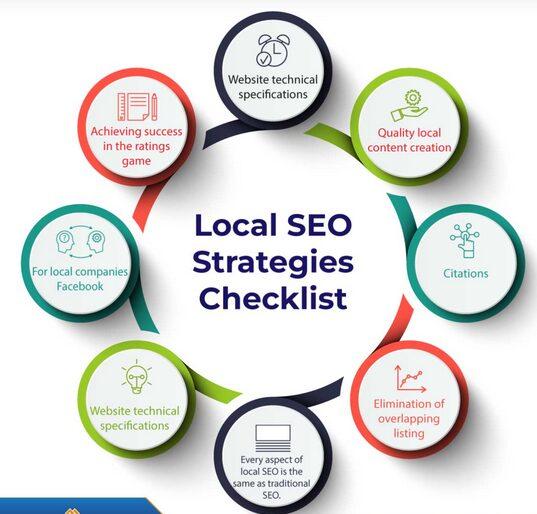Best Practices for SEO Blog Writing – Boost Visibility & Engagement
In today’s digital world, writing a blog isn’t just about sharing your thoughts—it’s about making sure your content is seen, read, and shared. SEO blog writing is the key to boosting visibility and engagement, helping your articles rank higher on search engines while keeping your audience engaged. Whether you’re a blogger, business owner, or content marketer, mastering SEO-friendly writing is essential. Here’s how to do it right.
Why SEO Blog Writing Matters
Search Engine Optimization (SEO) enhances your blog’s discoverability on Google and other search engines. By implementing best practices, you can:
-
Increase organic traffic
-
Improve user engagement
-
Establish authority in your niche
-
Generate leads and conversions
If your blog isn’t optimized, even the best content might go unnoticed. Let’s explore the best SEO writing strategies to maximize your reach and impact.
1. Start with Keyword Research
Keywords are the foundation of SEO writing. Use tools like Google Keyword Planner, Ahrefs, or SEMrush to find relevant search terms your audience is using. Aim for a mix of:
-
Primary keywords: The main focus of your blog
-
Secondary keywords: Related terms that provide context
-
Long-tail keywords: Specific phrases with lower competition but higher conversion potential
Example: Instead of just targeting “SEO tips,” try “best SEO tips for beginners.”
2. Write Engaging, High-Quality Content
SEO is more than just inserting keywords—it’s about valuable content that keeps readers engaged. Here’s how:
-
Write for humans first, search engines second – Focus on readability and clarity.
-
Use a conversational tone – Make your content engaging and relatable.
-
Provide actionable insights – Offer real value, tips, and solutions.
-
Avoid keyword stuffing – Overusing keywords hurts readability and rankings.
3. Optimize Your Headlines & Meta Descriptions
Your headline (H1 tag) should be compelling and keyword-rich. Make sure it:
-
Captures attention
-
Includes the main keyword
-
Stays under 60 characters to avoid truncation in search results
Example: “10 Proven SEO Strategies to Skyrocket Your Blog’s Rankings”
Your meta description (the snippet below the title on search engines) should:
-
Be under 160 characters
-
Include your primary keyword
-
Provide a clear summary of your post
Example: “Discover 10 powerful SEO consulting blog writing tips to boost visibility, engagement, and rankings. Learn how to optimize content for search engines today!”
4. Use Proper Heading Structure (H1, H2, H3)
Search engines and readers love structured content. Use headings to break up your content and improve readability:
-
H1 – Main title (use only one per blog)
-
H2 – Key sections of your post
-
H3 & H4 – Subsections and supporting details
Example:
H1: Best SEO Blog Writing Practices
-
H2: Why SEO Matters for Blogs
-
H2: Top SEO Blog Writing Strategies
-
H3: Keyword Research & Placement
-
H3: Optimizing Meta Tags & Headlines
-
5. Optimize Images & Multimedia
Images enhance engagement but need SEO optimization:
-
Use descriptive filenames (e.g., “seo-blog-writing-tips.jpg” instead of “image123.jpg”)
-
Add alt text with relevant keywords for accessibility
-
Compress images to improve page speed (tools: TinyPNG, ImageOptim)
6. Internal & External Linking
Linking is an essential SEO tactic:
-
Internal links – Connect to other relevant content on your site to improve navigation and dwell time.
-
External links – Link to authoritative sources to boost credibility.
Example: If you mention “content marketing,” link to a related blog post on your site.
7. Improve Readability & Formatting
Users skim before they commit to reading, so make content scannable:
-
Use short paragraphs (2-3 sentences max)
-
Add bullet points & numbered lists
-
Highlight key points with bold or italics
8. Optimize for Mobile & Page Speed
Google prioritizes mobile-friendly websites. Ensure:
-
Your blog is responsive (adapts to all screen sizes)
-
Page speed is optimized (use Google PageSpeed Insights)
-
Avoid pop-ups that disrupt user experience
9. Encourage Engagement & Social Sharing
Boost your blog’s reach by:
-
Adding social sharing buttons
-
Asking questions to encourage comments
-
Writing compelling calls-to-action (CTAs)
Example: “What’s your biggest SEO challenge? Let us know in the comments!”
10. Track & Adjust Using Analytics
SEO is an ongoing process. Use Google Analytics and Google Search Console to monitor:
-
Traffic sources
-
Bounce rate
-
Keyword rankings
-
User behavior
Adjust your strategy based on data insights to continuously improve performance.
Final Thoughts
SEO blog writing is both an art and a science. By implementing these best practices, you can increase visibility, boost engagement, and attract more readers to your blog. Remember, the goal is to create content that is not only optimized for search engines but also valuable for your audience.
Start applying these techniques today and watch your blog soar in rankings!




